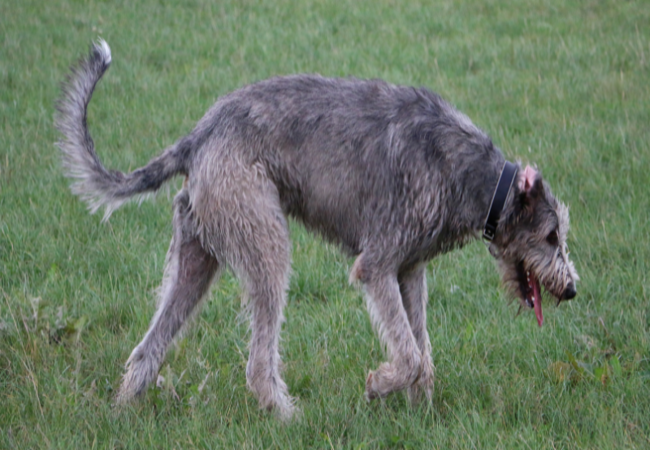Wobbler Syndrome in Dogs: Veterinary Guide 2025 🩺🐾

In this article
Wobbler Syndrome in Dogs: Veterinary Guide 2025 🩺🐾
By Dr. Duncan Houston BVSc
Hello, I’m Dr Duncan Houston BVSc, veterinarian and founder of Ask A Vet. Wobbler syndrome—also known as cervical spondylomyelopathy—is a neurological condition affecting the neck that leads to a “wobbly” gait, weakness, and neck pain in large and giant dog breeds. In this 2025 guide, I’ll cover the condition’s types, causes, recognition, diagnostics, treatment options, rehabilitation, and ongoing care. Ready? Let’s navigate this together 🧠🐶
1. What Is Wobbler Syndrome? 🐕🦺
Wobbler syndrome, or cervical spondylomyelopathy (CSM), refers to compression of the spinal cord and nerve roots in a dog’s cervical spine due to bone, disc, or ligament abnormalities.
There are two primary forms:
- Disc-associated CSM (DAWS): Intervertebral disc herniation impinges on the spinal cord—common in middle-aged Dobermans.
- Bony-associated CSM (BACS): Bone/ligament thickening narrows the canal, seen in young Giant breeds like Great Danes.
2. Who’s Most at Risk? 🧬
This condition primarily affects large to giant breeds, including:
- Great Danes (young adults), Dobermans (middle-aged), Mastiffs, Rottweilers, German Shepherds, Boxers, Bernese Mountain Dogs, Basset Hounds, Rhodesian Ridgebacks, etc.
Genetics play a major role, and diet during growth—excess protein/mineral intake—may contribute in young dogs. Canal stenosis and vertebral instability are anatomical risk factors.
3. Spotting the Signs 📋
Wobblers causes spinal cord dysfunction leading to:
- 🔹 “Wobbly” or ataxic gait—typically noticed in hind limbs, progressing to all four legs.
- 🔹 Short-strided front limb gait, front limb weakness, crouched posture.
- 🔹 Scuffed toenails due to dragging, muscle atrophy around shoulders.
- 🔹 Neck pain, reluctance to raise head, spine stiffness, occasional yelping.
- 🔹 Sudden worsening can occur with minor trauma or a ruptured disc.
4. Diagnosis: Confirming the Wobble 🔍
Diagnosing Wobbler syndrome involves:
- 🔸Neurologic exam: Tests reflexes, proprioception, gait, and pain.
- 🔸Plain X‑rays: Assess vertebral alignment, disc space narrowing.
- 🔸More advanced imaging, like myelogram, MRI, or CT, provides definitive cord compression evidence.
- 🔸Cerebrospinal fluid analysis may aid in ruling out infection/other diseases.
5. Treatment Options 🛠️
5.1 Medical Management
For mild cases or when surgery is not feasible:
- Anti-inflammatories (NSAIDs/steroids), muscle relaxants.
- Strict exercise restriction, cage rest, controlled walks.
- Approximately 40–54% of dogs respond temporarily.
5.2 Surgical Intervention
- Goals: spinal cord decompression and vertebral stabilization.
- Techniques include ventral slot, dorsal laminectomy, fusion, and distraction.
- Ideal when performed early—improves gait and pain control; however, some neurologic deficits may persist.
6. Prognosis & Recovery 🧭
Prognosis varies based on:
- Severity of spinal lesions and clinical signs at diagnosis.
- Treatment choice: Surgery offers higher improvement rates, while medical management works temporarily for some.
- With rehab—physiotherapy, laser, and hydrotherapy—surgical recovery improves.
Average survival is about four years from diagnosis, regardless of treatment.
7. Rehabilitation & Home Care 🏡
- Short leash walks to maintain muscle without strain.
- Physiotherapy: laser therapy, underwater treadmill, massage, aid mobility.
- Joint supplements (glucosamine, omega-3) support spinal health.
- Avoid stairs, slippery floors—use ramps, rugs.
- Monitor gait, neck mobility, stool/urination patterns, and weight.
8. Utilizing Ask A Vet 💡
- Ask A Vet: Teleconsults for gait changes, post-op check-ins, and pain advice.
9. Breeding & Prevention 🧬
- Genetic basis: Avoid breeding affected dogs; use imaging screening in lines.
- Manage nutrition—avoid excess calories/protein in growing giant breeds.
- Early detection through regular vet checks and gait monitoring.
10. When to Seek Vet Advice Immediately 🚨
- Sudden gait deterioration or paresis.
- Pain, yelping, inability to stand or move.
- Recent minor trauma followed by neurologic signs.
- Bladder/bowel incontinence post neck events.
11. Key Takeaways 📝
Wobbler syndrome is a serious spinal condition common in large breeds, presenting as a “wobbling” gait and neck pain. Early diagnosis, via advanced imaging, informs the best management—medical or surgical. Physical rehab and home modifications support recovery. Tools like Ask A Vet help monitor and manage long-term care. With the right approach, many dogs can live happier, more comfortable lives. 🐾💙
If you notice signs of wobbling or neck discomfort, book a telehealth appointment at AskAvet.com, explore supportive care options. Together, we’ll stabilize the wobble, step by step. 🌟






